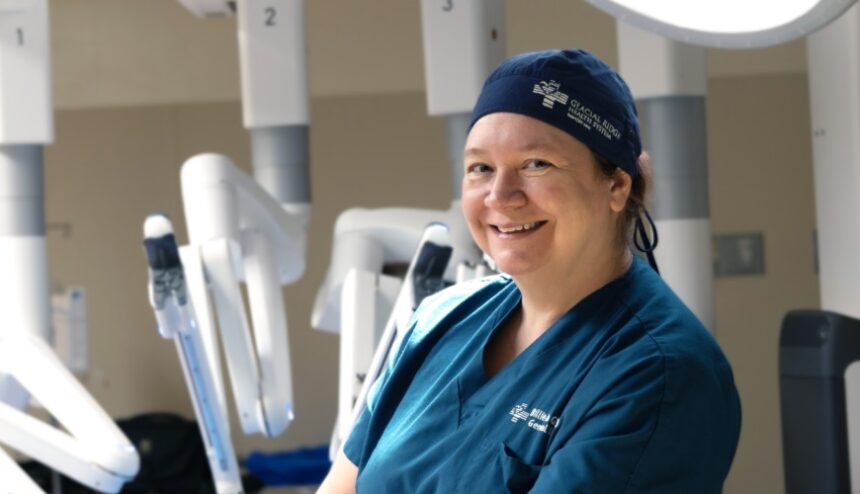Living with a hernia can be painful and disruptive to daily life. Fortunately, robotic-assisted hernia repair offers a state-of-the-art, minimally invasive solution that allows for a quicker return to normal activities.
Robotic-assisted hernia repair with the da Vinci® Xi surgical system provides several advantages over traditional open surgery or conventional laparoscopic surgery. The incisions are smaller, about the size of your fingertip. Many patients experience significantly reduced post-operative pain and discomfort with faster recovery. In fact, most patients go home the same day and return to normal activities within one to two weeks.
Can hernias go away on their own?
Hernias occur when an organ squeezes through a weak spot in the surrounding muscle or connective tissue, often creating a bulge in your stomach or groin. Some people are born with muscle weakness that can lead to a hernia, while others develop one due to pressure from heavy lifting, pregnancy, or constipation. In some cases, a hernia isn’t noticeably visible but causes discomfort when bending, lifting, or coughing. Hiatal hernias occur when the part of the stomach pushes through the diaphragm into the chest, leading to heartburn and pain.
Hernias don’t heal on their own and often worsen over time. In fact, hernia repair is one of the most common surgeries performed in the U.S.
It’s about time. Repair your hernia. Relieve your pain. Recover quickly.
No one looks forward to surgery, but Dr. Billie Jo Grieve has the experience and compassion to put you at ease. If you’re experiencing hernia symptoms, don’t try to “tough it out.” Robotic-assisted hernia repair is an excellent option for inguinal (groin), umbilical (belly button), incisional (from previous surgeries), and hiatal hernias. Whether it’s your first repair or a revision, Dr. Grieve has the expertise to get you back to life—faster.

